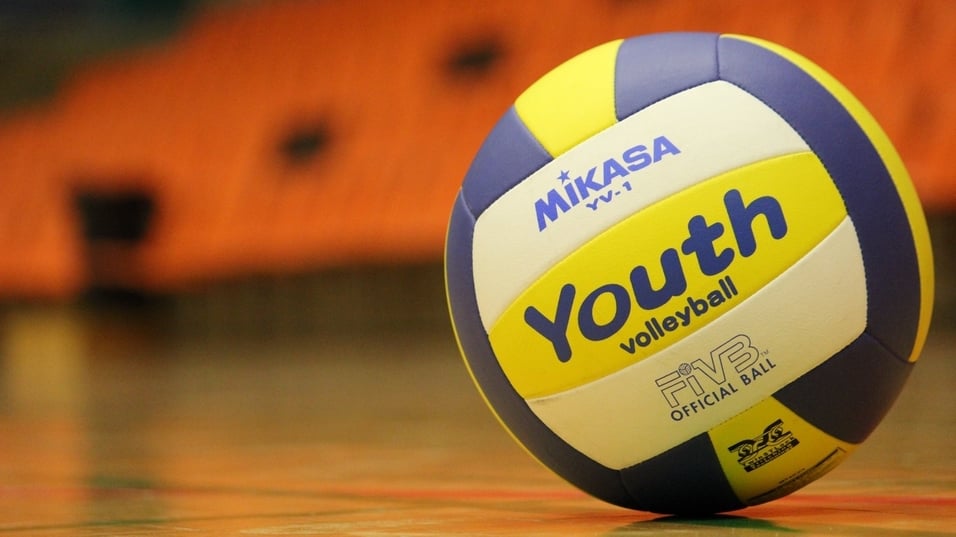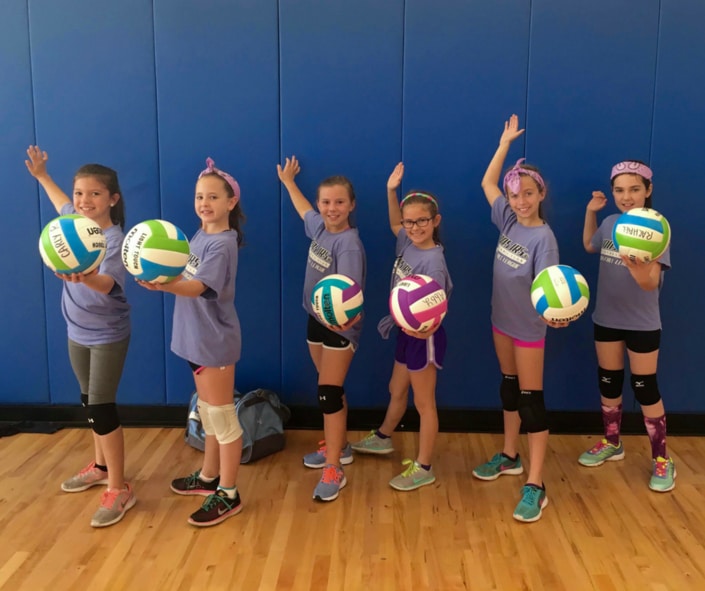Team sports not only have a positive effect on the health of a child, but they’ll also make the child more sociable and confident.
However, on the other hand, the risk of injury increases, because team disciplines require constant contact with other players.
Volleyball is a happy exception: It’s an exciting sport, yet it involves no direct clashes with rivals. The benefits for the entire body make it an ideal sport for a child to play.
In this article, For Kids will outline the basics of volleyball for kids, including the benefits of this game for the children, disadvantages for kids, and the potential medical contraindication.
You’ll also find out how to choose the right volleyball academy for your child, and the best age to start volleyball lessons.
Volleyball for kids
Table of Contents
- 1. Best age
- 2. Benefits
- 3. Disadvantages
- 4. Medical contraindication
- 5. Cost
- 6. Choose academy
- 7. Summary
The best age to start volleyball for kids
The best age to start volleyball for kids is between eight and 10 years old, as it’s considered a “late” sport.
It’s advisable to provide a child with preliminary training before this age, which can be general physical training or any other precursor sport like swimming or soccer.
Summer camps are a great way to start organized volleyball and are usually provided through local community programs or USA volleyball (the largest sponsoring organization for volleyball).
Many schools have volleyball teams, and once your child reaches middle school age, they can participate.
7 benefits of volleyball for children

People playing volleyball can be found everywhere: In the gym, on the beach, at school or in the yard.
For adults, this is an alternative to regular exercise, and for children, it’s a fun game with simple rules.
Volleyball is not only for entertainment, though. It can also be a very useful sport for a child who plays, as it offers the seven benefits outlined below.
1. Teamwork and socialization
Volleyball teaches kids about teamwork and helps them establish contact with their peers.
The latter is especially important for children who experience problems with socialization in everyday life.
A group of like-minded people will help the child to become more sociable and confident.
2. Positive impact on health
Volleyball has a good effect on a child’s health. The variety of movements in this sport will work almost all of the muscle groups in the body.
Volleyball also strengthens a child’s immune system and cardiovascular system. It can also improve their eye movement and body posture.
3. Creates positive qualities for the child
Playing volleyball forms and strengthens positive qualities that will surely be useful for a child later in life, such as hard work, responsibility, the desire to win, discipline and courage.
4. Doesn’t require large financial expenses
Volleyball belongs to the category of affordable sports, as a kid will only need to participate in a volleyball academy, and everything will be available there.
For training outside the volleyball court, the child will need only a net, a ball and teammates.
Plus, there is no expensive outfit required, which usually is the main expense of a parent when they’re getting a child athlete ready to play.
5. Teaches the kids how to fall properly
Children learn how to fall to catch the ball, and this skill is extremely useful not only during outdoor games in the yard or walking on the ice, but in many other situations.
6. Visiting other cities and countries
7. Risk of injury is lower than in other contact sports
Disadvantages of playing volleyball
The disadvantages of volleyball are manifested mainly at the professional level and are associated with the health of the child.
1. Ankle Sprains
Ankle sprains are the most common injury in volleyball, accounting for 41 percent of all volleyball-related injuries, according to the British Journal of Sports Medicine.
2. Spine-related injuries
We’re talking about a large load on the spine here. When the spine is put through intensive regular exercises, this can provoke diseases, injuries and back pain in a young athlete.
This problem can be solved if you follow a few simple rules:
- Sleep on a semi-rigid or hard mattress
- Warm up well,
- Do regular exercises to relax the spine
- Occasionally go to the pool or have a massage.
3. Other
The other “shortcomings” of volleyball aren’t different from those of other sports.
There’s the potential problem of combining study and competition at the professional level, and other difficulties that are familiar to every athlete.
Medical contraindications
Like any active sport, volleyball is associated with a number of medical contraindications. Children can’t play when they’re suffering from:
- Instability of the cervical vertebrae
- Chronic heart disease
- Diseases of the musculoskeletal system
If the child has these diseases or other diseases, it’s necessary that they undergo a medical examination by a doctor before playing.
In some cases, volleyball for children may not be contraindicated, but rather, recommended.
For example, if your child needs to improve their posture, develop their joint mobility or train their eye muscles, a medical professional may recommend it.
How much does volleyball cost for children?

a. Equipment
Volleyball is quite a budget sport. The main item of expenditure is sportswear and outdoor clothing for outdoor play. Balls and nets are provided by the volleyball school, and in most cases, the classes are also free.
The game and training clothes are relatively inexpensive in comparison to other sports. Shorts, a T-shirt and volleyball sneakers are usually all you’ll need.
You can also buy a complete volleyball set for the backyard for $80 to $100.
b. Traveling fees and competitions
Traveling fees and competitions can be paid in three possible ways:
- The sports school takes over the expenses
- The expenses are shared between the school and the parents
- The whole amount falls on the parents’ shoulders
According to the Junior Volleyball Association:
- National/Elite Team Estimated Season Cost (10 Tournaments) – $5,100
- Regional Team Estimated Season Cost (eightTournaments) – $2,600
- Local Team Estimated Season Cost (six Tournaments) – $1,500
Choosing a volleyball academy
If you’re determined to have your child play volleyball, the next logical stage is the search for a sports school or academy.
To make the right choice, pay attention to the following points.
1. Academy location
The closer it is to home or school, the easier it’ll be for a small athlete to balance their workouts and lessons, and you won’t have to take them a long distance to the club several times a week.
2. The trainer
Often, parents will sign a child up to an academy with a specific trainer, not just the academy in general, and this is usually the right decision.
Much depends on the coach, so you need to take into account:
- The personal merits of the coach
- The success of the coach’s players
- The way the coach communicates with kids
3. Expectations
Like any sports discipline, volleyball can be played at a professional or amateur level.
If you have your child train for health promotion, all-round development and pleasure, any local section with a good coach and a convenient schedule will be enough.
For professional training, it makes sense to choose a very good club that participates in international competitions.
Summing up
Volleyball is one of the safest sports for children, as the lack of direct contact with opponents reduces the risk of injury to a minimum. The sport is safe for both boys and girls alike.
If your child is active and sociable, and loves outdoor games, this dynamic sport will definitely suit them.
References
- Overuse in volleyball training/practice: A review on shoulder and spine-related injuries –European Journal of Sport Science
- USA Volleyball
- Junior Volleyball Association
- Fédération Internationale de Volleyball

